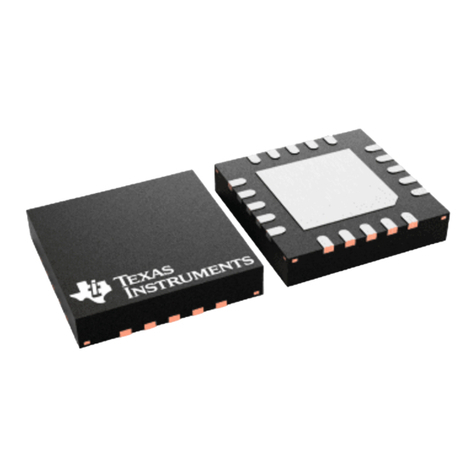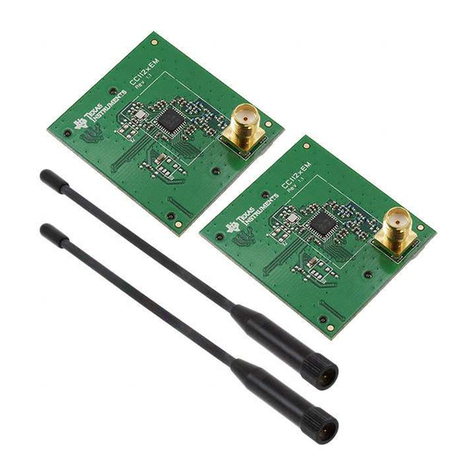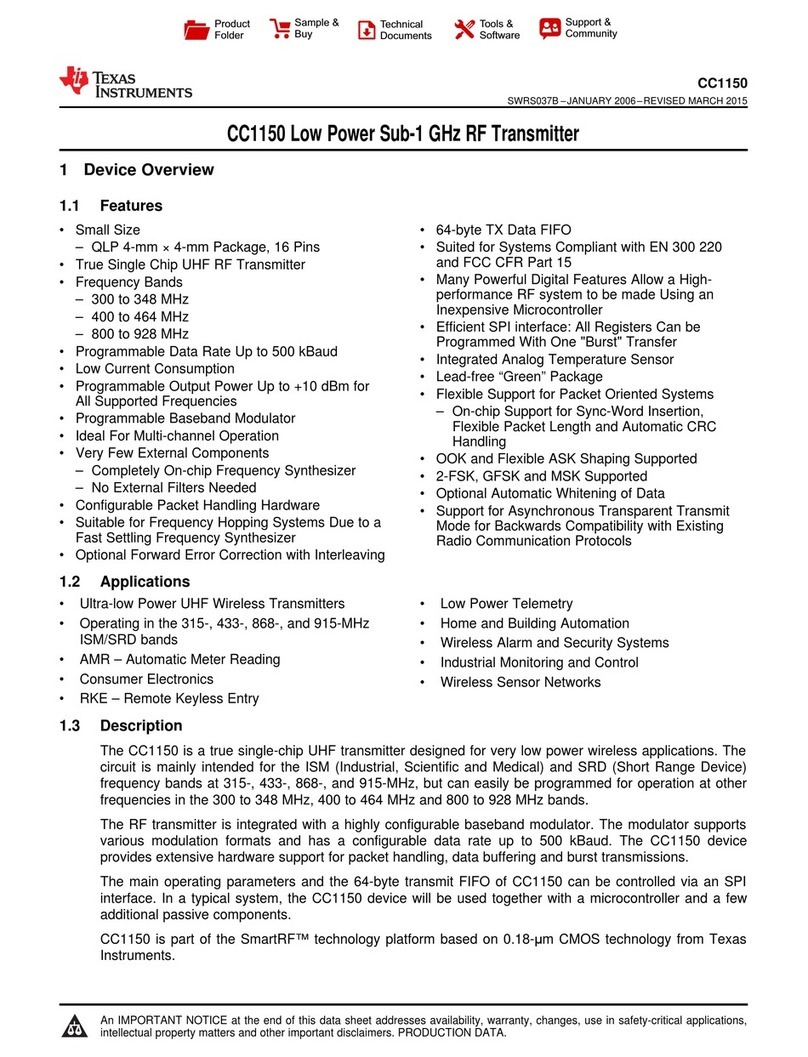
www.ti.com
2SNLU233–October 2017
Submit Documentation Feedback
Copyright © 2017, Texas Instruments Incorporated
LVDS83BTSSOPEVM User’s Guide
Contents
1 Introduction ................................................................................................................... 3
2 LVDS83BTSSOPEVM Configuration...................................................................................... 3
2.1 LVDS83BTSSOPEVM Kit Contents.............................................................................. 3
2.2 Description of EVM Board......................................................................................... 3
2.3 Power-Up Sequence ............................................................................................... 4
2.4 Signal Connectivity ................................................................................................. 5
3 PCB Construction .......................................................................................................... 10
3.1 LVDS83BTSSOPEVM Board Layout........................................................................... 10
4 LVDS83BTSSOPEVM Bill of Materials.................................................................................. 17
5 LVDS83BTSSOPEVM Schematics ...................................................................................... 18
List of Figures
1 LVDS83BTSSOPEVM ...................................................................................................... 3
2 Clock Rising Edge (High) Jumper Setting................................................................................ 4
3 Clock Falling Edge (Low) Jumper Setting................................................................................ 4
4 Active Shutdown/Clear Jumper Setting................................................................................... 4
5 24-Bit Color Host to 24-Bit LCD Panel Application With 2 MSB Transfer Over Fourth Data Channel .......... 6
6 24-Bit Color Host to 24-Bit LCD Panel Application With 2 LBS Transfer Over Fourth Data Channel............ 7
7 18-Bit Color Host to 18-Bit LCD Panel Application...................................................................... 8
8 12-Bit Color Host to 18-Bit LCD Panel Application...................................................................... 9
9 24-Bit Color Host to 18-Bit LCD Panel Application .................................................................... 10
10 LVDS83BTSSOPEVM Top Layer........................................................................................ 11
11 LVDS83BTSSOPEVM Layer 2 – GND.................................................................................. 12
12 LVDS83BTSSOPEVM Layer 3 – DUT GND............................................................................ 13
13 LVDS83BTSSOPEVM Layer 4 – VCC .................................................................................... 14
14 LVDS83BTSSOPEVM Layer 5 – GND.................................................................................. 15
15 LVDS83BTSSOPEVM Bottom Layer.................................................................................... 16
16 LVDS83BTSSOPEVM Schematics (1/3)................................................................................ 18
17 LVDS83BTSSOPEVM Schematics (2/3)................................................................................ 19
18 LVDS83BTSSOPEVM Schematic (3/3) ................................................................................. 20
List of Tables
1 BOM.......................................................................................................................... 17
Trademarks
FlatLink is a trademark of Texas Instruments.






























